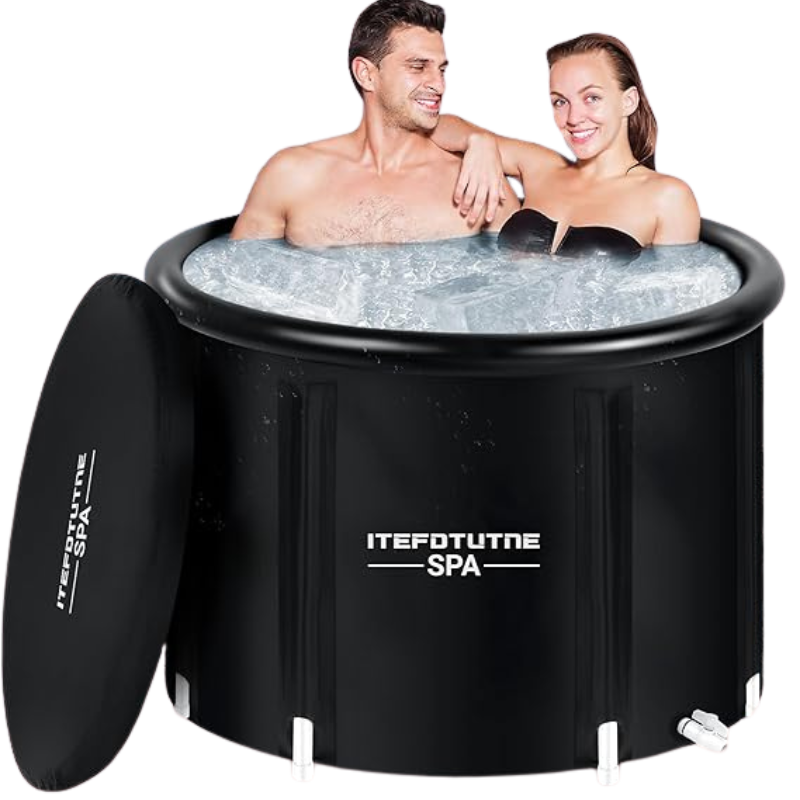Boost Endurance Performance: Alternative Training & Recovery Methods
- Dérik
- Mar 31
- 2 min read

Endurance is the key to sustaining performance in sports, fitness, and even daily activities. While traditional training methods like long-distance running, cycling, and high-intensity workouts play a crucial role, alternative approaches can significantly boost endurance performance while preventing burnout and reducing injury risk. Let’s explore some innovative training and recovery methods to optimize your endurance performance.
1. Breathwork Training for Oxygen Efficiency

Your breath plays a fundamental role in endurance performance. Practicing controlled breathing techniques, such as diaphragmatic breathing, the Wim Hof Method, and nasal breathing, can improve oxygen intake and utilization. Nasal breathing, in particular, enhances endurance by promoting efficient oxygen exchange and reducing respiratory fatigue.
2. Cold Water Immersion and Contrast Therapy

Recovery is just as important as training when it comes to endurance. Cold water immersion (CWI) and contrast therapy (alternating between hot and cold water) help reduce inflammation, enhance circulation, and accelerate muscle recovery. Studies show that athletes who incorporate these methods experience less muscle soreness and improved performance over time.

3. Functional Strength Training

Many endurance athletes focus only on cardio, neglecting strength training. However, functional strength exercises like kettlebell swings, sled pushes, and resistance band workouts improve muscular endurance, enhance power output, and reduce injury risks. Strengthening stabilizing muscles also improves running economy and cycling efficiency.
4. Mindfulness and Mental Endurance

Mental fatigue can be just as limiting as physical exhaustion. Meditation, visualization, and mindfulness techniques help athletes build mental resilience, stay focused during long training sessions, and push through fatigue. The mind-body connection is a powerful tool for improving endurance performance.
5. Altitude and Hypoxic Training to Boost Endurance Performance.

Training at high altitudes or using a hypoxic training mask can increase red blood cell production, enhancing oxygen delivery to muscles. This method is widely used by elite endurance athletes to improve stamina and performance at sea level.

6. Nutritional Optimization for Endurance

Fueling your body properly is essential for sustained energy output. Consider incorporating:
Beetroot juice – Rich in nitrates, it improves oxygen efficiency.
Chia seeds – A great source of slow-digesting energy.
Adaptogenic herbs like Rhodiola Rosea and Ashwagandha – Help the body adapt to physical stress and improve endurance capacity.
Electrolyte balance – Proper hydration with magnesium, potassium, and sodium prevents cramps and fatigue.
7. Mobility and Fascia Release Techniques

A tight, restricted body limits endurance performance. Foam rolling, deep tissue massage, and mobility drills improve flexibility, reduce stiffness, and enhance movement efficiency. Incorporating these techniques prevents injuries and ensures your body moves optimally.
8. Sleep Optimization for Maximum Recovery

Quality sleep is essential for muscle repair and energy restoration. To maximize endurance, focus on:
Maintaining a consistent sleep schedule
Optimizing sleep environment (dark, cool, and quiet room)
Using magnesium and natural sleep aids to promote deeper sleep cycles
Final Thoughts
Enhancing endurance is not just about logging more miles or pushing harder. By integrating alternative training and recovery methods, you can build sustainable endurance, improve efficiency, and stay injury-free. Whether through breathwork, strength training, nutritional strategies, or mental conditioning, these methods provide a well-rounded approach to endurance enhancement.
Looking for more fitness and recovery strategies? Check out Healthy Habitat HQ for expert tips and resources!
.png)



Comments